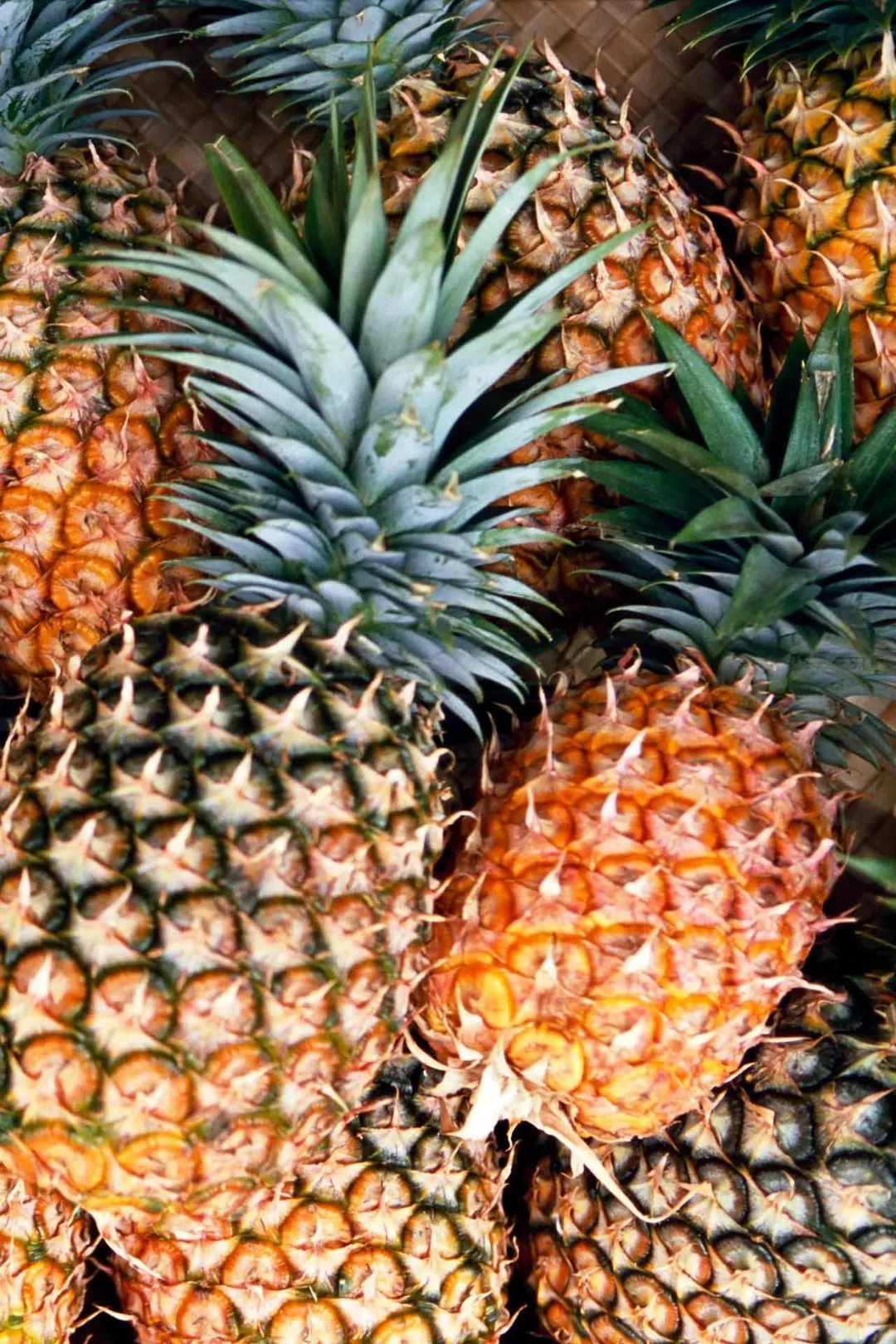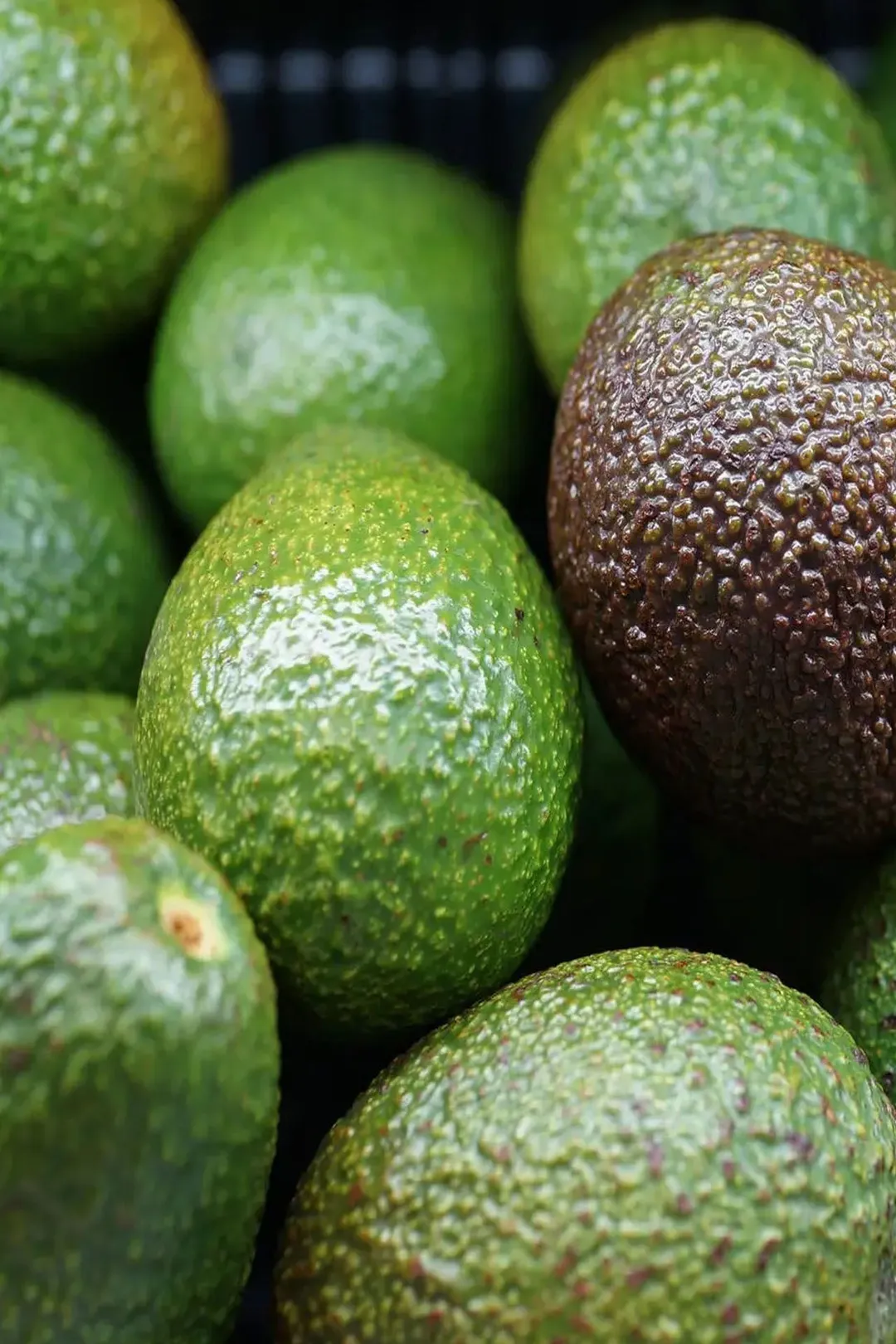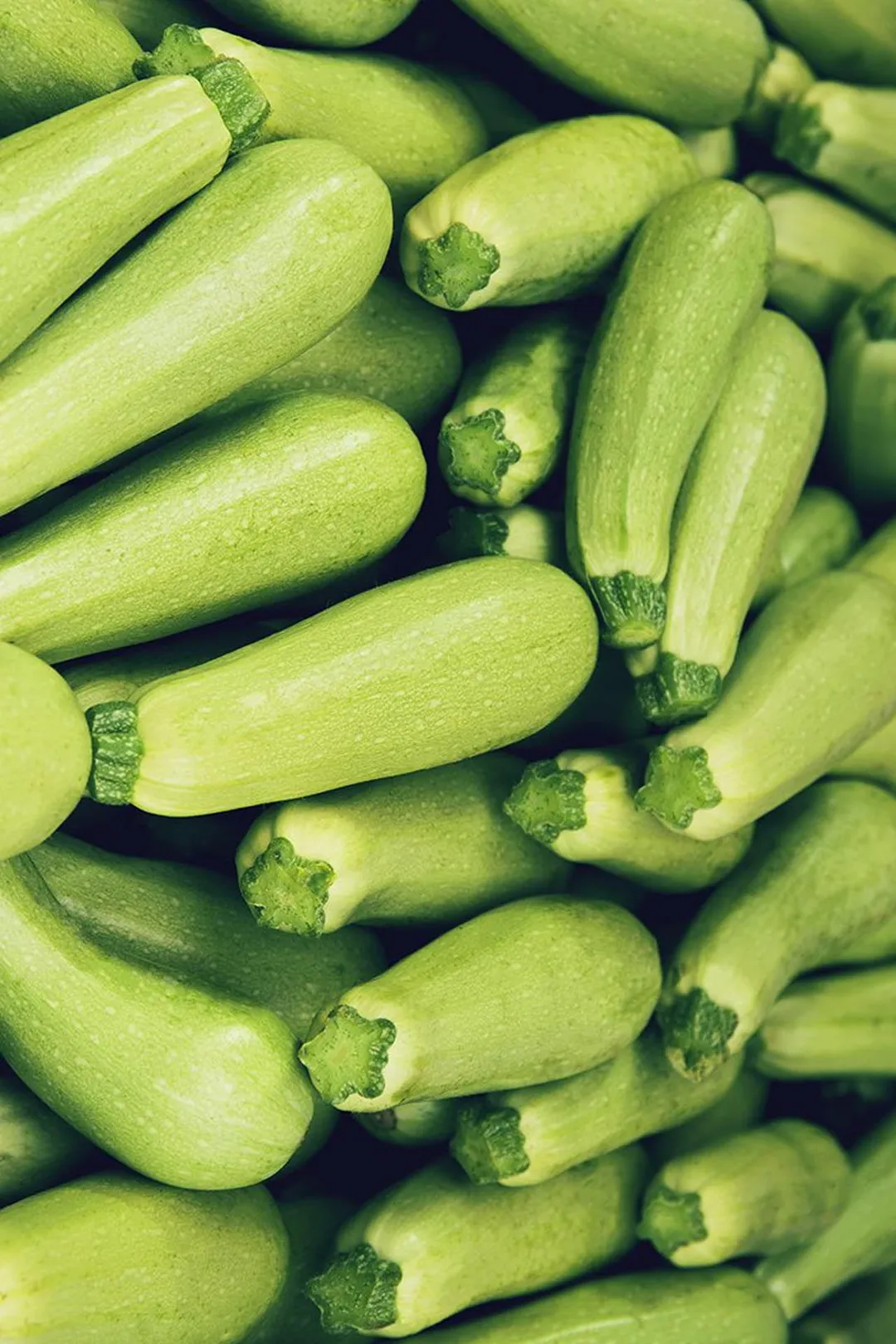First time dealing with this alien-looking fruit and wondering how to cut a pineapple? While the huge, prickly fruit with its bushy crown may look very intimidating, it is actually quite easy to deal with.
This cutting guide can tell you everything that you need to know in only a couple of minutes.
How to Tell When a Pineapple Is Ripe
One thing about pineapple is that it ceases ripening the instant it is plucked from the tree. Unlike many other fruits, you cannot leave an unripe pineapple on the counter for a couple of days for it to turn delectably ripe. If it’s unripe when it’s plucked, it’ll stay that way forever.
As a result, it is very important to pay attention when browsing through the fruit stall in the supermarket. You don’t want to be stuck with a partially green pineapple as it will taste mouth-puckeringly sour instead of sweet.
You especially don’t want to be stuck with a fully unripe pineapple. An unripe pineapple is poisonous. Its toxin can irritate your throat and act as a powerful laxative.
Fortunately, most pineapples that are commercially sold are at least partially ripe. Although they would taste quite sour, they wouldn’t be dangerous to consume. However, if you purchase freshly plucked pineapples in events like farmer markets, be vigilant.
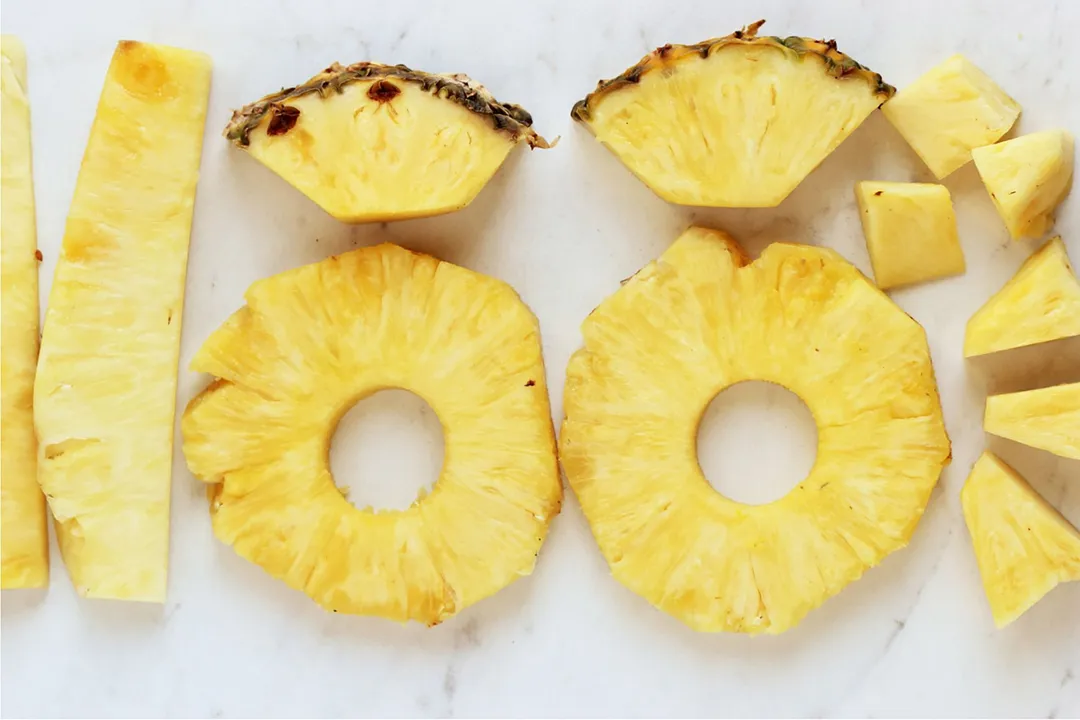
Use the following signs to determine if a pineapple is ripe.
- The Scent
Although this is usually one of the last signs that people check for, the scent of the pineapple is often the most reliable sign.
Hold your nose close to the base of the pineapple and take a deep breath. If the scent is pleasant and sweet, the fruit has ripened. If you smell a very faint scent or nothing at all, the pineapple is most definitely unripe.
There is also a third-case scenario. If you smell a very sour, fermented scent, the pineapple has become rotten. Avoid it.
- The Color
Typically, you can immediately determine whether a pineapple is ripe or not by looking at its color. The yellower the outer skin is, the riper it will be.
A pineapple with a golden coat from the crown all the way to the bottom is ideal.
Do not pick anything that’s way too green.
You should also avoid pineapples that have turned into a shade of deep orange. They are most likely already past their prime and have become overripe. An overripe pineapple will taste just fine, but the issue is that it could have already begun to ferment and rot within. Therefore, it’s best to just avoid it.
- The Texture
Similar to many other fruits, a ripe pineapple will have a slightly softer texture once ripened. Pick one up and squeeze it gently. The tough rind should give in slightly. If it feels tough, it’s most likely unripened.
The texture could be a little bit hard to tell, especially if it’s the first time you’re handling a pineapple. For most people, we recommend relying mostly on the scent and color of the fruit to know the ripeness.
The Best Way to Cut a Pineapple
There are actually many different ways to cut up a pineapple. However, in this guide, we’ll show you the most beginner-friendly techniques.
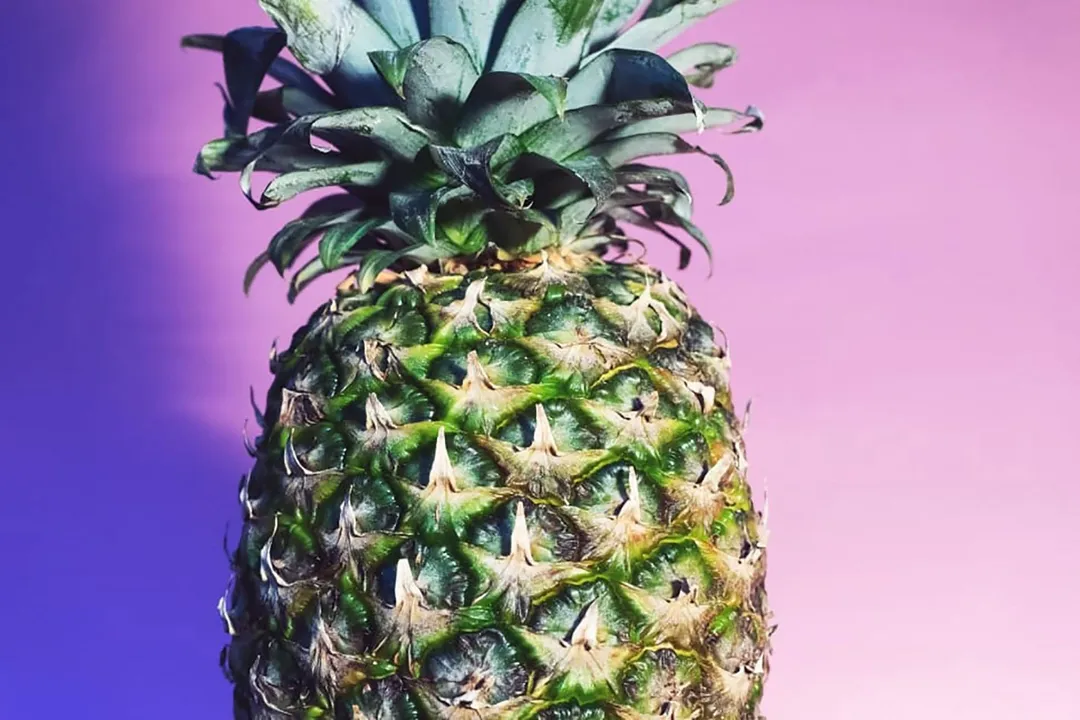
1. How to Cut Pineapple Rings
If you haven’t heard of them before, they are circular slices of pineapple with the center core cut out, creating a hole in the middle.
Pineapple rings are great for decorating dishes. Their funny look coupled with their bright golden coloring makes them a superb garnish for tropical salads and cocktails. If you like to snack during the day, a bowl of pineapple rings can do the job.
Step 1: Cut Off the Crown and the Bottom
Lay the pineapple on its side on your chopping board and hold it still with one hand.
Use a large chef’s knife and rest the blade about ½ inch from the top of the fruit, where the bushy crown and the body meet. Press down firmly on the knife and cut off the crown.
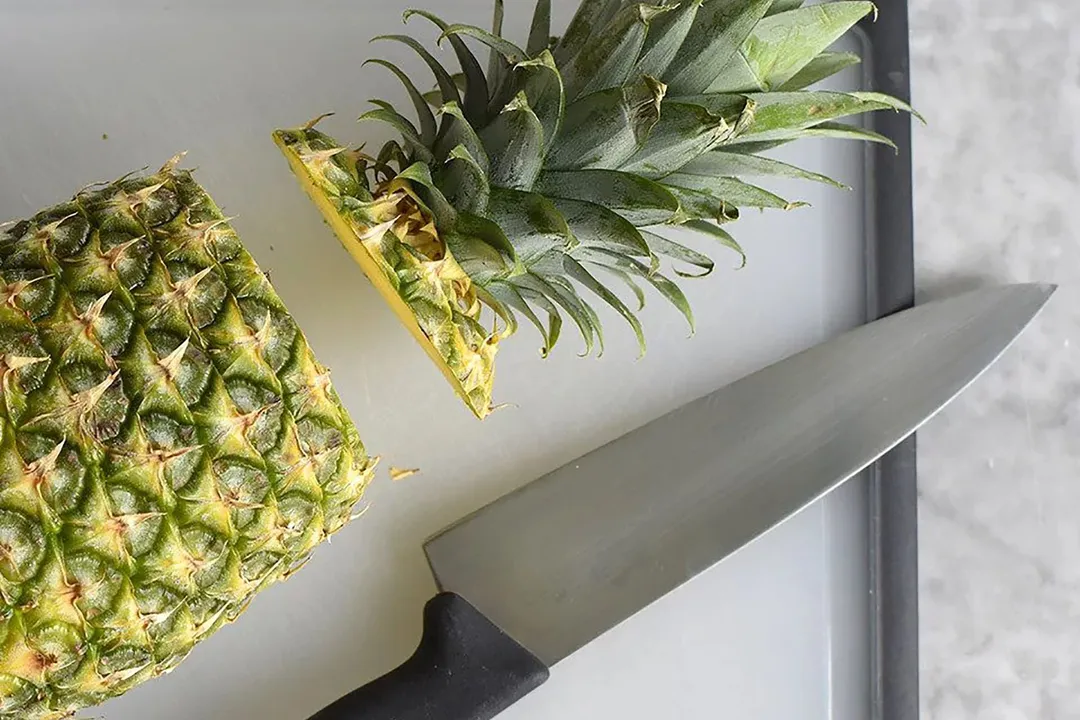
Step 2: Turn Upside Down and Rest
Turn the pineapple upside down on a plate. You can stand the fruit upright on the flat top that you just created by cutting off the crown. Leave the pineapple there for 30 minutes.
Most of the sugary pineapple juice is concentrated at the bottom. Doing this will allow the juice to redistribute back to the top and — by extension — evenly throughout the flesh. This will make the pineapple slices significantly juicer and sweeter.
Step 3: Cut Off the Bottom
After 30 minutes, turn the pineapple around. Repeat the same process as with the crown and cut ½ inch out of the bottom.
Step 4: Trim Off the Skin
Stand the now flat-bottomed pineapple upright. Starting from the top all the way down to the bottom, trim off the rough outer skin of the fruit with your knife. Follow the natural lines of the fruit. Don’t cut straight down as you’ll waste some of the edible flesh.
Do this on all sides of the pineapple until the golden flesh is totally exposed.
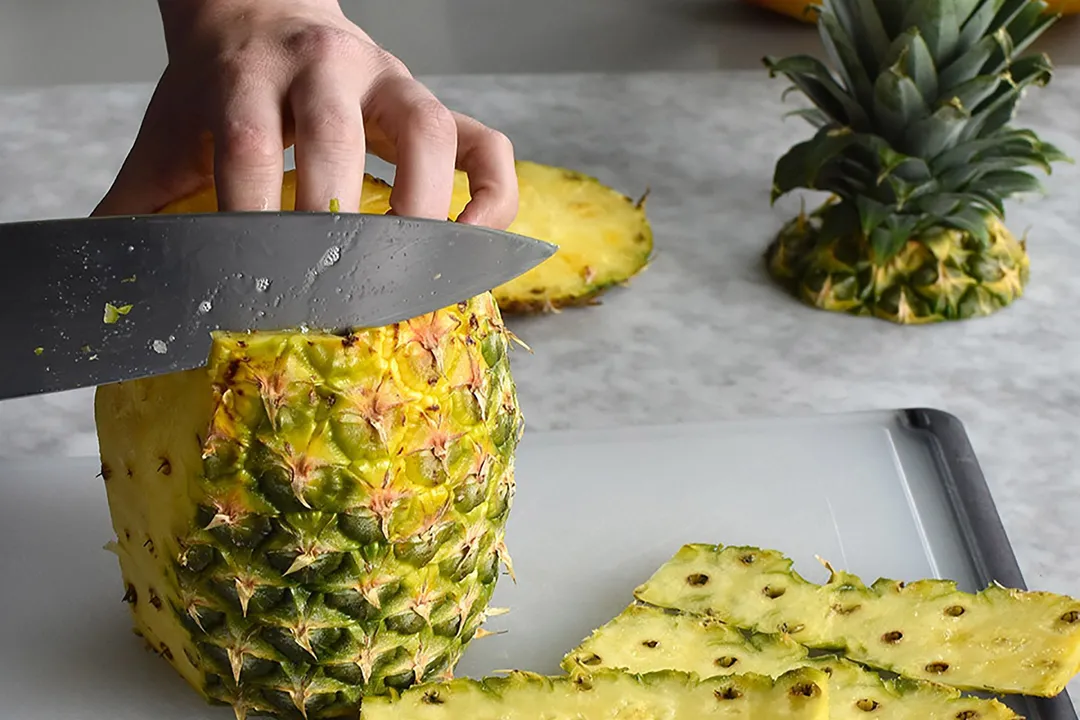
Step 5: Take Out the Pineapple Eyes
Once the fruit has been deskinned, you will find many circular dark spots peppered throughout the exterior of the flesh. These are the ‘eyes’, and they are not edible. The next step is to remove them.
If you take a look at the eyes, you will notice that they are arranged in a spiral pattern.
Pick up a small paring knife and carve diagonal V-shaped trenches onto the pineapple.
Rotate the fruit as you work and follow the spiral pattern to remove all of the eyes. You can work from the bottom up or the top down, depending on your dominant hand.
Though it requires quite a lot of work, it’s worth it if you’re going to cut the pineapple into rings. Not only will the spiral pattern make each ring look more aesthetically pleasing, but the inedible eyes also won’t poke the inside of your mouth. The scraggy eyes aren’t exactly good-looking, either.
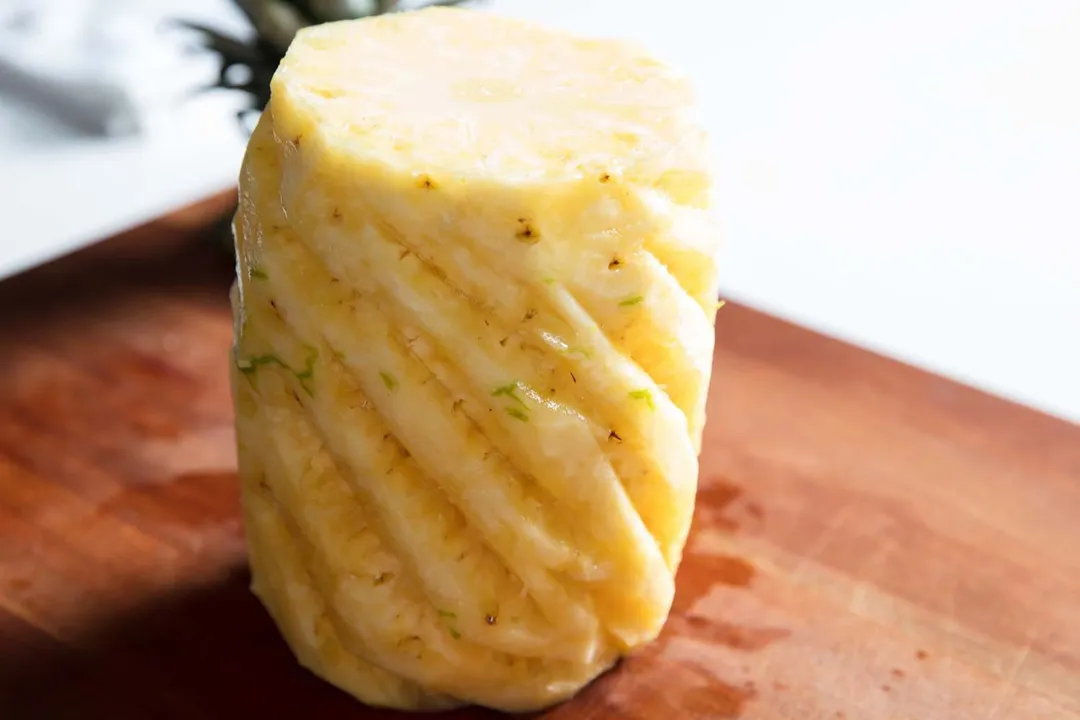
Step 6: Cut Into Circular Slices and Cut Out the Core
Once all of the eyes are removed, lay the pineapple on its side again. Pick up your large chef’s knife and cut downwards vertically to create big, circular slices. Space each cut to the thickness you desire.
In order to take out the center core, you can use a circular cookie cutter. We recommend using a 1 ½-inch cutter.
And there you have it! Some pineapple rings for your enjoyment.
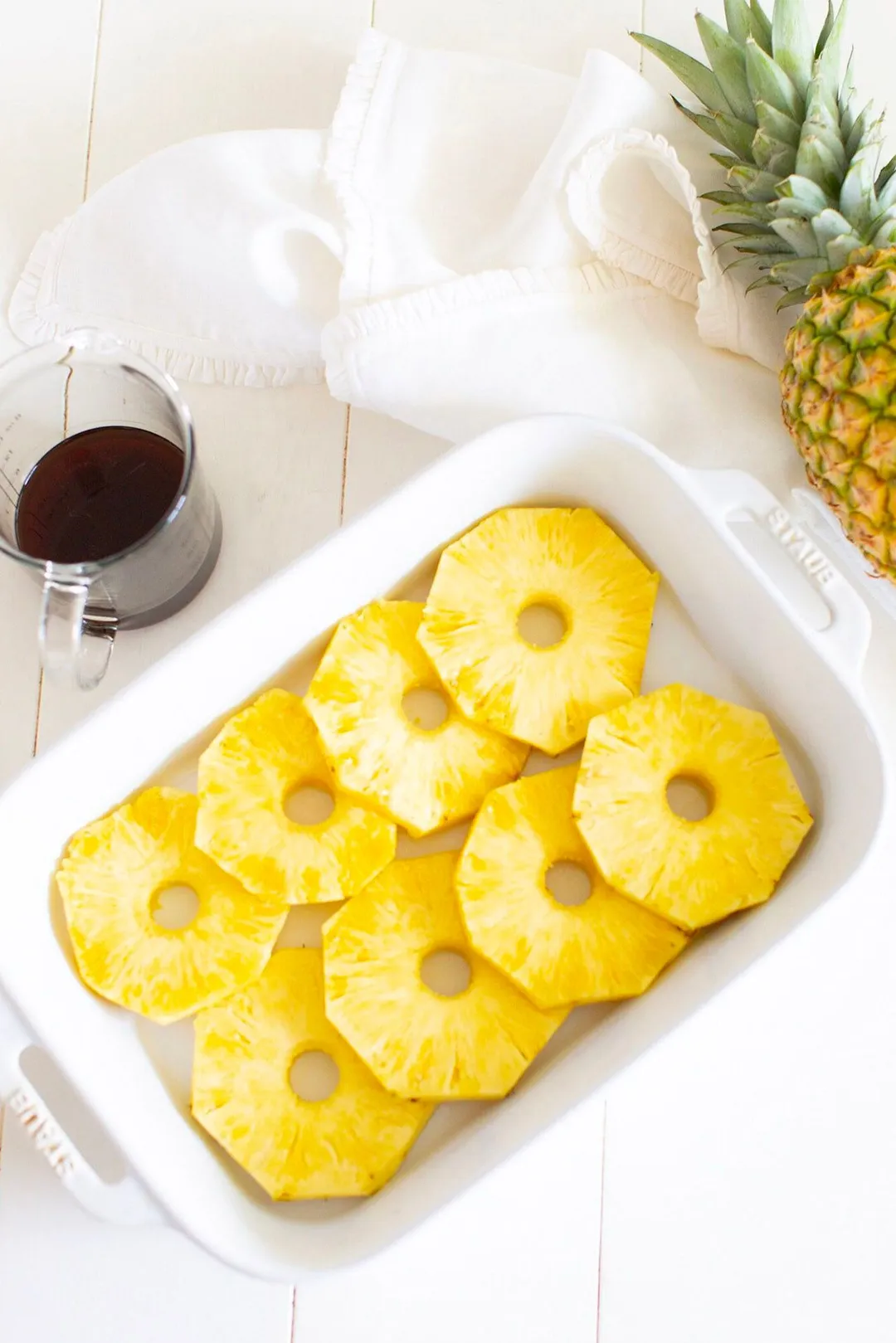
2. How to Cut Pineapple Chunks
Pineapple chunks, although not as aesthetically pleasing as the delicate ring-shaped version, are easier to make. If you don’t care much for presentation, this is a great, simple way to process a pineapple.
Step 1: Cut, Rest, and Trim the Pineapple
Starting off, follow the same first four steps listed in the previous technique.
Cut off the crown of the pineapple, then turn upside down and rest for 30 minutes. After that, shear off the bottom.
Once the pineapple’s crown and bottom are off, you can start to take off the skin.
Scroll back up for detailed instructions if you have skipped them.
Step 2: Cut In Half
Stand the deskinned pineapple upright and use your large chef’s knife to make a lengthwise cut straight down the middle. Cut the pineapple into two big halves.
Step 3: Cut into Quarters
Once you have two halves on the chopping board, lay each half on its flat side. Again, make a lengthwise cut right down the middle of each to create four quarter pieces. Each quarter should look triangular in shape.
Step 4: Remove the Core
Lay each quarter on its flat side and make a diagonal cut on the inside to remove the tough core.
Step 5: Divide Again and Cut Into Chunks
Make a lengthwise cut through the center of each quarter again. This is the last division.
Now that you have smaller pieces on the chopping board, you can make crosswise cuts to form chunks. Space out each cut to get a desirable thickness.
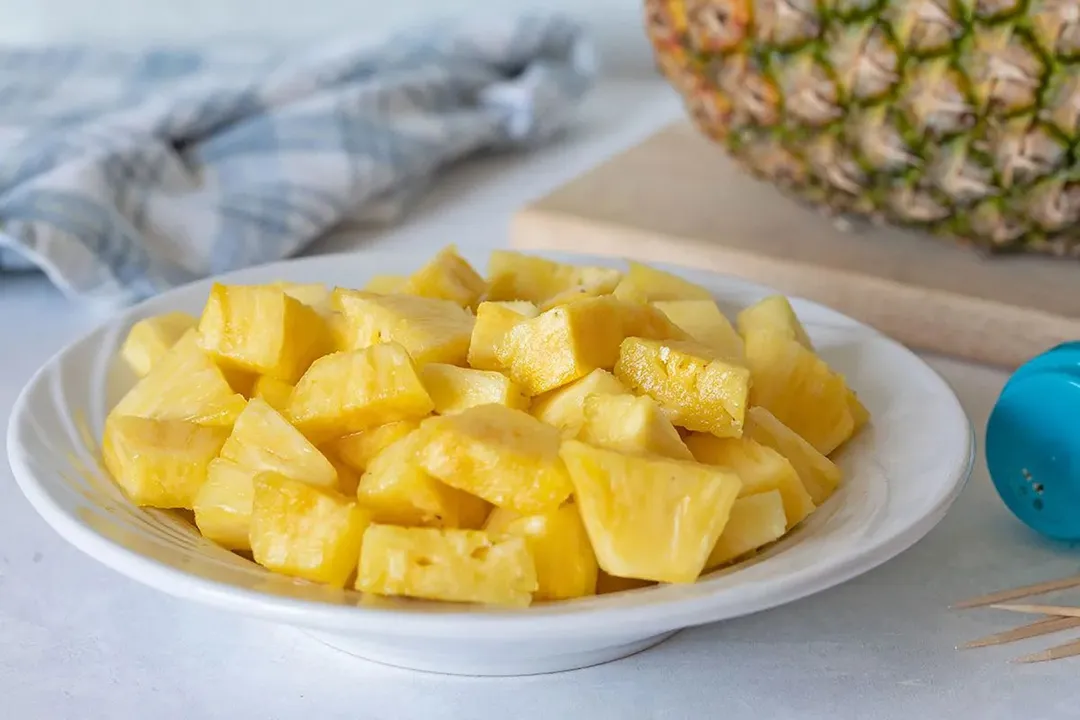
Each of the chunks may have a tiny eye attached to the side. You can use a paring knife to trim them off.
Conclusion
As we mentioned earlier, there are a lot more creative, technically difficult ways to cut a pineapple out there. Nonetheless, these two are the simplest ones that you will most likely be able to nail on the very first try.
We hope this guide on how to cut a pineapple has been of use to you! We’d love to hear about your experiences. Don’t be shy to share the results in the comment section.
Tuyet Pham
Head Chef, Culinary ConsultantLuna Regina
Writer, Author